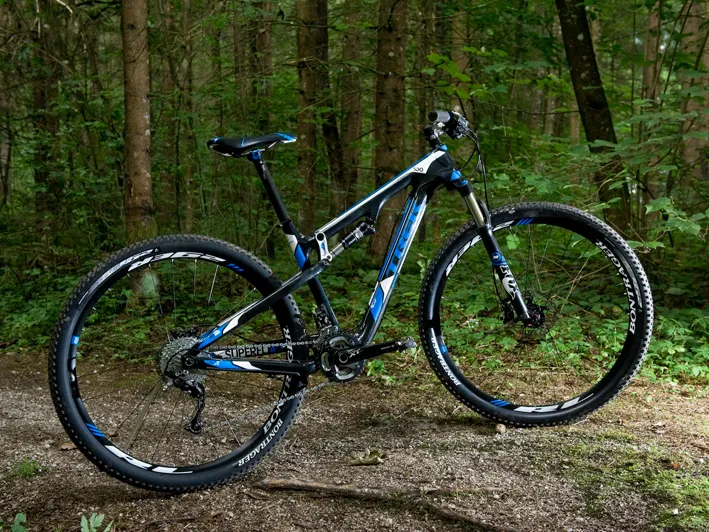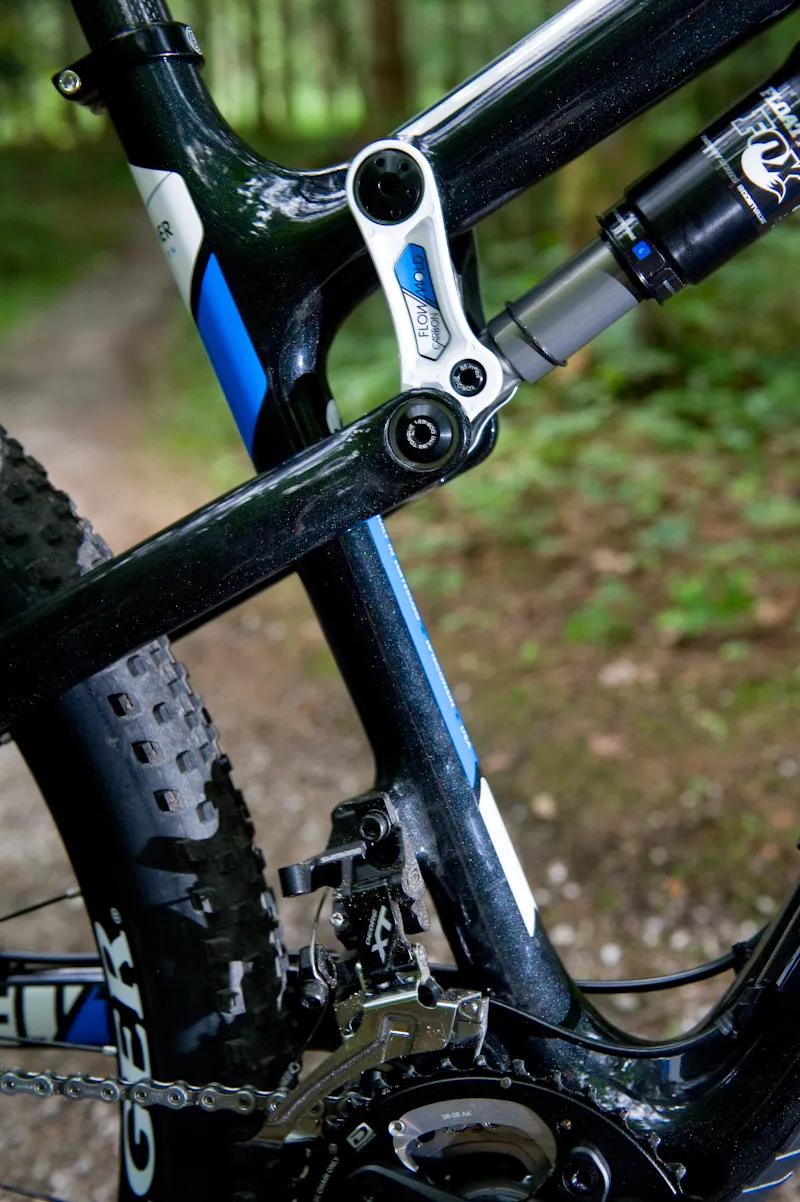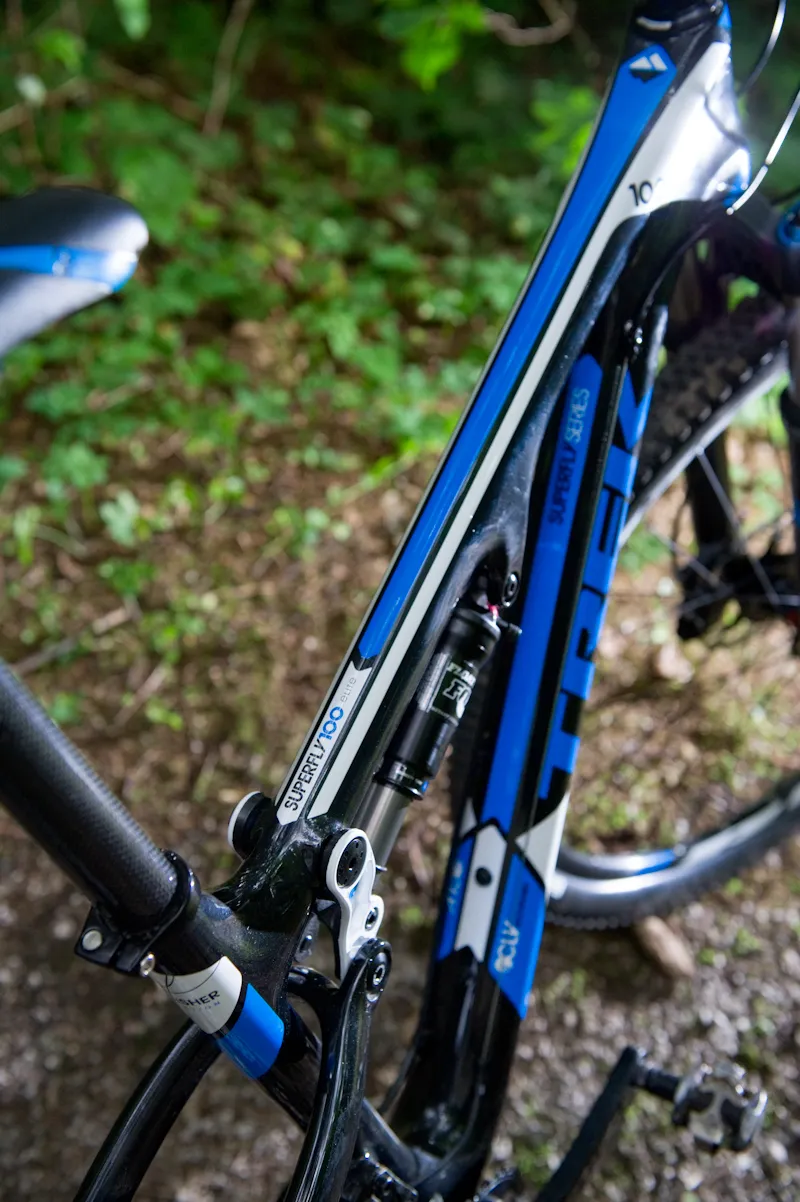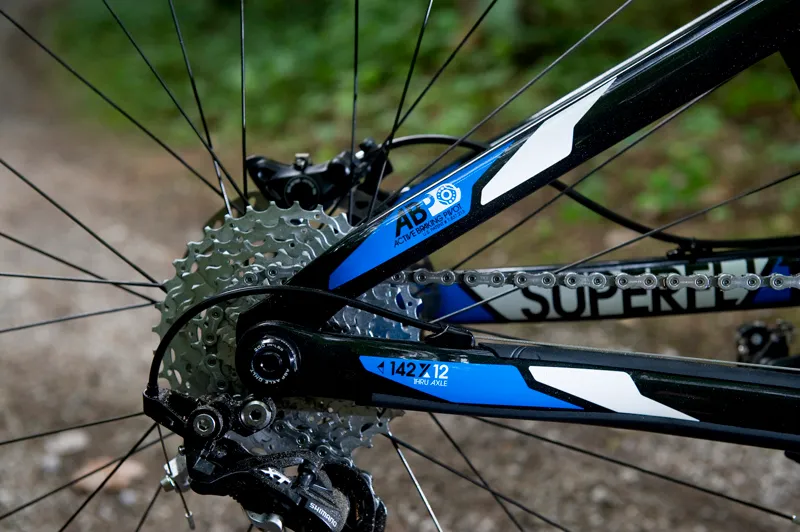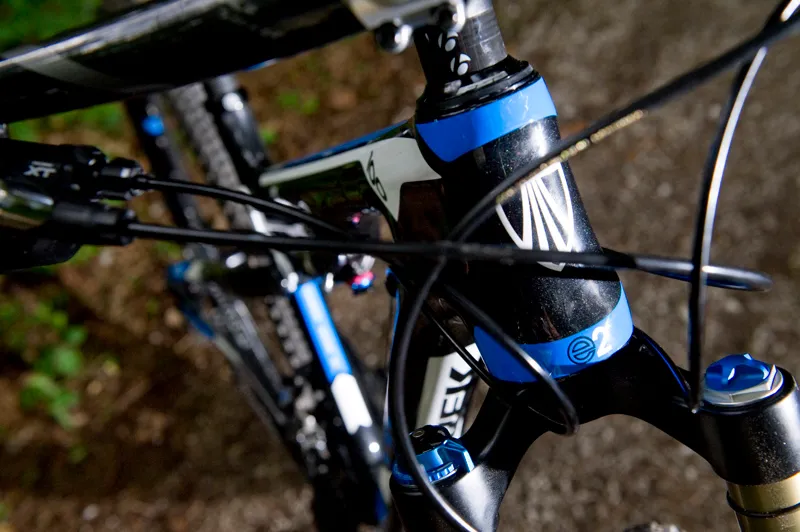Trek are underpinning their commitment to their Gary Fisher collection of 29ers by offering five models of Superfly 100 for 2012; three with carbon fibre frames and two with aluminium. The Superfly 100 Elite sits second from top in the pecking order. With great handling and a decent spec, it's one to watch out for in 2012.
Ride & handling: Planted front end and excellent power transfer
We put the Superfly 100 Elite through its paces in the forests of the Austrian Alps during Trek's 2012 mountain bike launch, riding a set of trails that offered pretty much everything you’re likely to want to come across on a short-travel, racy bike.
Frame tweaks and the addition of a rear through-axle for 2012 have definitely stiffened up the back of the bike, and when applying power from standing starts and powering through swooping bends it tracked well. On rocky and rooty climbs, drive through the rear wheel felt direct, helped by the relatively short (452mm) chainstays, but without undue wandering at the front end.
Dropping down fast, rooty descents the stiff head tube and fork combo lent immediacy to the steering without it ever feeling either twitchy or sluggish at slower speeds. The longer fork offset (51mm) of Fisher’s G2 steering has a lot to do with this, and the front end felt more manageable, more predictable and less twangy than some other 29ers we’ve tested recently.
The comfortably wide (680mm) Bontrager Race Lite carbon bar helped in this area, and the 15QR front axle is also a vast improvement over last year's open dropout. It tidies up the front end handling and adds a little more confidence on more technical terrain. Simply put, the front end feels planted.
Frame: Chassis tweaks and through-axles bolster stiffness for 2012
The Superfly's US-made OCLV carbon fibre frame and swingarm have been tweaked for 2012, with the top tube flowing into a beam-like gusset to add rigidity to the upper seat tube while keeping the bike’s industry-leading standover height.
The E2 tapered head tube/down tube/top tube junction is still a volumous heft of carbon weave that adds to, rather than detracts from, the bike’s overall ‘straight down to business’ aesthetic, and the swing link is the same stiff and light flow-moulded carbon affair.
Perhaps the most significant change, at least the one we’re most likely to feel as riders, is the switch to through-axles at both ends of the bike. Both stiffen up the peripheries of the bike in areas where noodling can get irritating on rougher trails. The ABP Convert system at the rear is easily switched from 142x12 to a standard 135x5 quick-release, should you want to regress or use an older rear wheel.
Equipment: Balanced suspension plus decent shifting and braking kit
The Fox 32 fork and Float RP23 shock felt taut and balanced, and dropping down rock steps, both felt like they had plenty in reserve. In fact, we were surprised to see we’d used full travel on the fork; certainly the bike never felt like it was getting out of its depth.
Meanwhile, the low-profile Bontrager 29-1 Team 2.2in tyres held their own in the wet, rooty conditions. They’re fast rolling and quick off the mark, though we’d opt for something with a little more bite if the going gets looser.
The Shimano XT drivetrain gives smooth shifts from its 2x10 (26/38T) chainset, and we appreciated the higher gear of the 11-36T rear cassette (last year's was 12-36T) to compensate for the one-tooth-smaller big chainring. The new XT brakes serve up masses of power, but the short two-finger levers are tricky to reach, even set right against the grips, if you’re a middle-finger-braking aficionado.
